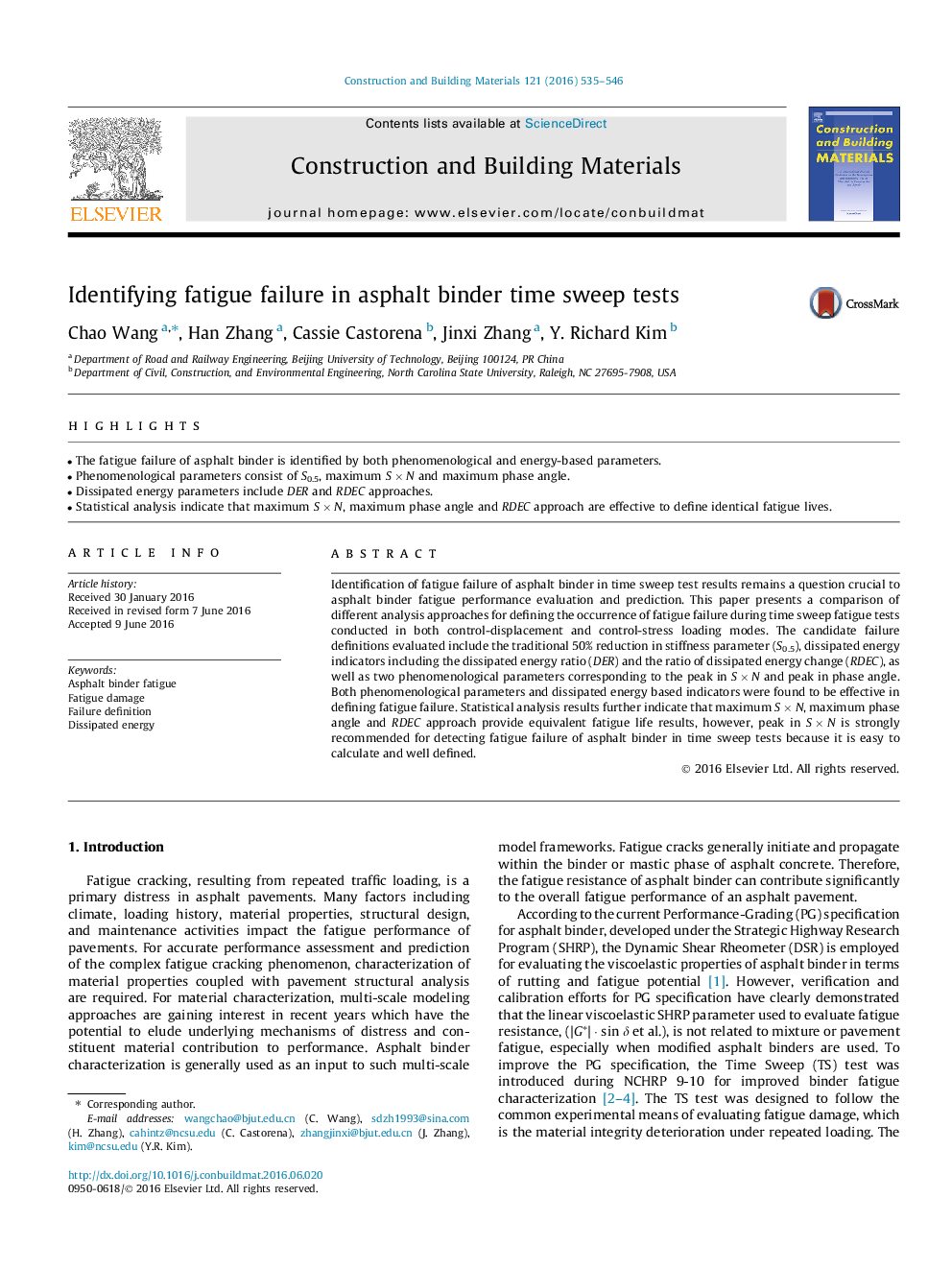| Article ID | Journal | Published Year | Pages | File Type |
|---|---|---|---|---|
| 6718560 | Construction and Building Materials | 2016 | 12 Pages |
Abstract
Identification of fatigue failure of asphalt binder in time sweep test results remains a question crucial to asphalt binder fatigue performance evaluation and prediction. This paper presents a comparison of different analysis approaches for defining the occurrence of fatigue failure during time sweep fatigue tests conducted in both control-displacement and control-stress loading modes. The candidate failure definitions evaluated include the traditional 50% reduction in stiffness parameter (S0.5), dissipated energy indicators including the dissipated energy ratio (DER) and the ratio of dissipated energy change (RDEC), as well as two phenomenological parameters corresponding to the peak in SÂ ÃÂ N and peak in phase angle. Both phenomenological parameters and dissipated energy based indicators were found to be effective in defining fatigue failure. Statistical analysis results further indicate that maximum SÂ ÃÂ N, maximum phase angle and RDEC approach provide equivalent fatigue life results, however, peak in SÂ ÃÂ N is strongly recommended for detecting fatigue failure of asphalt binder in time sweep tests because it is easy to calculate and well defined.
Keywords
Related Topics
Physical Sciences and Engineering
Engineering
Civil and Structural Engineering
Authors
Chao Wang, Han Zhang, Cassie Castorena, Jinxi Zhang, Y. Richard Kim,
